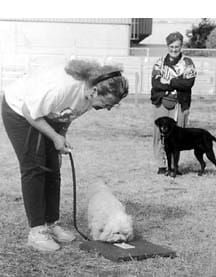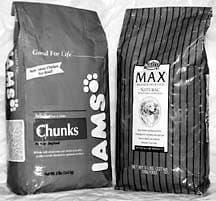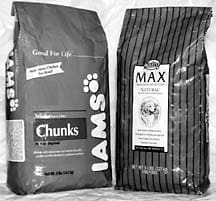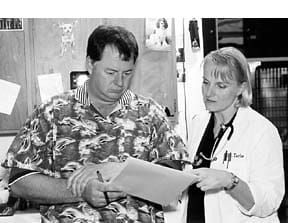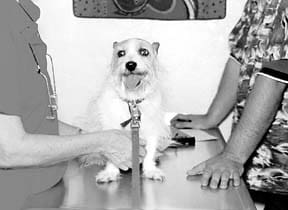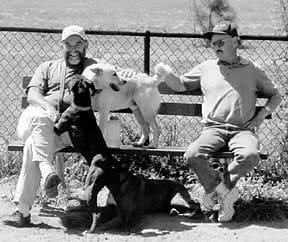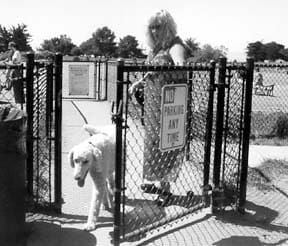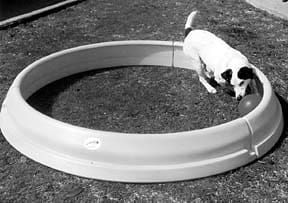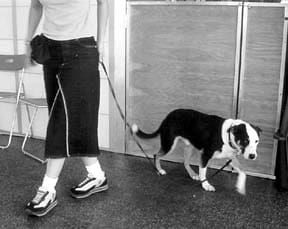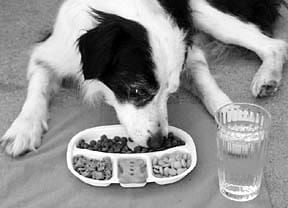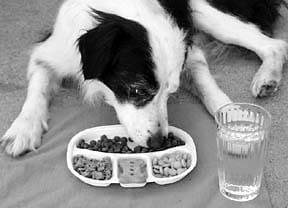So, you’ve decided that you and your dog need professional help. Don’t worry; all relationships can use a helping hand at one point or another. Maybe the two of you have communication issues that need to be dealt with (like your dog doesn’t listen and you wish he would!). Or maybe your bouncing bundle of fur is growing faster and bigger than expected, and you’re desperate for a constructive outlet for all that energy and enthusiasm. You’re sure that training is the answer to your problems – and you are probably right!
But how can you sort through piles of names given to you by well meaning friends, neighbors, your veterinarian, and the folks at the feed store? (We also recommend looking through the Trainer Search at the Association of Pet Dog Trainers web site, found at www.apdt.com. APDT is dedicated to building better trainers through education, promoting dog-friendly methods and encouraging their use.) Getting names is not the problem; figuring out which trainer will be just right for you and your dog is the first step in meeting your training needs. And the following five tips will help!
1. Look for a trainer who offers what you want
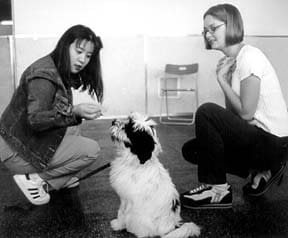
That may seem obvious. You want someone to help you train your dog – right? But different trainers have different skills and offer a variety of services. To really narrow down your specific needs and wants, ask yourself:
• Do I want a group class or individual training? Each has its benefits. For someone with a new puppy, a class offers essential opportunities for socialization. Plus, classes are less expensive than individual training. With individual training, however, you’re more likely to get personalized attention and have your specific needs addressed.
• Am I looking for general training or do I need help with a specific problem? If you are dealing with a behavior problem such as barking, separation anxiety or aggression, you may want to look for a trainer or behaviorist with experience in that area.
• Am I primarily looking for short-term training opportunities to help my dog become a happy member of my family, or do I have specific long-term goals such as obedience or agility competition? Some of us look for training classes because we love dog sports and hanging out with people who are as crazy about their dogs as we are.
Take Nancy Layton, for example. Layton, who lives in Aptos, California, with her mixed-breed, Dodger, and her Bearded Collie,Scout, plans to compete with both of her dogs in obedience and agility. “I was working with one trainer that I really liked, but her classes weren’t consistent enough for me,” says Layton who decided to train with a club that offered the structure she needed to prepare for competition.
2. Investigate different training methods
Trainers use a variety of techniques and methods. Most of the techniques do “work” to change behavior, but not all are gentle, kind, and humane. When choosing a trainer, it is essential to understand which training methods are both humane and effective. Positive reinforcement training, for example, works by rewarding what the dog does right. It is an effective, humane, and fun way to train. Dogs can easily (and happily) learn everything from basic manners to masters’ level agility using positive reinforcement techniques.
Positive reinforcement training is becoming more common all the time, making it easier to find good trainers who use reward-based methods. Two of the most popular positive methods are “lure and reward” and “clicker training.” Both use food as the primary reinforcement and both methods are very effective.
We would suggest that you steer away from “traditional” or military based-training methods that use choke or pinch collars. Training can be accomplished without correction-based techniques; force is not necessary to train dogs. In addition, we’d recommend that you run from any trainer that uses inhumane practices such as hitting, kicking, hanging, shocking, or any other action that can cause a dog pain or distress.
When asking a trainer about her training methods, listen carefully to her answer. As positive reinforcement training has become more popular, some trainers who teach using traditional correction-based methods have begun calling themselves “positive” trainers, too. To discover exactly how a trainer works, ask for a detailed explanation of how she would train a basic behavior such as “Sit.” In addition, ask how she would deal with problems like a dog not listening, a dog misbehaving in class, or a dog who displays aggression.
Best of all, ask to sit in on a typical beginner’s class and watch to see whether or not the trainer’s description of his methods actually matches what he practices.
3. Get a feel for the trainer’s people skills, too
A trainer is part teacher, part therapist, and part communications expert, and the right trainer will help you even more than she will help your dog. But let’s face it, most people who become dog trainers do so because they like or even love dogs, not because they are experts at working with people. So how will you know if a trainer who works well with dogs will really be able to teach you?
Again, your best bet is to go and watch a class and observe the students and their dogs. Do they appear to be relaxed and enjoying the experience? Do you understand the trainer’s explanations? Are suggestions offered to students in a way that you feel good about? Are problems handled so that all involved appear satisfied? Or do the students look puzzled or frustrated?
Most important, however, is that the trainer is able to make it clear to you what is working and what isn’t – and what specifically you can do to fix problems. This takes observation skills, communication skills, and diplomacy. Layton notes that feedback she receives must come in a way that feels supportive, not punitive. A good trainer really needs to be able to “positively reinforce” what the person does right, as well as what the dog does right.
4. Check out the trainer’s level of experience
The length of time a trainer has offered professional services doesn’t determine her ability, but it is a gauge that should contribute to your decision. Someone who has less professional training experience but good skills, for example, may be great for a basic training class. In fact, newer trainers often bring to a class enthusiasm, energy, and creativity that a trainer who has taught for a long time may have lost.
However, a less-experienced trainer may not be the best choice for a class that offers specific activities that require overall behavior knowledge and experience. Take off-leash “play time” as an example. During off-leash socialization (even with puppies), a trainer really needs to be skilled at reading canine body language, predicting interactions, and intervening appropriately when necessary. This takes specialized skills. And a trainer without extensive experience and knowledge might not be the best choice for serious problems such as aggression.
How can you assess a trainer’s experience and knowledge? Ask how long she has worked as a professional trainer and how she learned to train. If your dog has a specific behavior problem, ask if she has dealt with this problem before. Remember that a good trainer will acknowledge what she doesn’t know, as well as what she does know.
Most importantly, trust your instincts. If the trainer “feels” like a good match, she probably is. On the other hand, if you do not have full confidence in a trainer’s ability to help you and your dog, you will be less likely to follow her prescribed plan of action and less likely to have success.
5. Cost and convenience count
While it can be said that you get what you pay for, it is equally true that for most of us a training class needs to be both affordable and convenient. A single class can get you started, but many people need or want advanced training opportunities. And the simple fact is, if you can’t afford the classes, you’re not likely to stick with it!
Changing personality?
After you’ve done your research and found a trainer to help you solve your canine relationship problems, all you have to do is get busy and train, right?
Right – but stay alert to apparent “shifts” in your trainer’s training philosophy or methods. If at any time you and your dog seem to frustrate the trainer, or knock up against the limits of her abilities to solve her student’s problems in a positive fashion, you may want to consider taking a break from training and reconsider your choice.
Less experienced trainers (or those who are, deep down, less committed to positive methods) may not have learned to cope with every type of canine behavior issue or with every dog “personality” positively. While it would be ideal if the trainer was the one who recognized his inability to deal with a given situation and gave you a recommendation for another trainer, it’s fairly rare that this happens. If your trainer begins to use punitive methods, citing your dog’s extraordinary “stubbornness,” “disrespect,” or any other trait as justification for force-based methods, politely excuse yourself from the class, and look for a new trainer. Believe me, there are positive trainers who can deal your dog – no matter how rowdy – without resorting to violence.
If your own commitment to positive methods needs reinforcement, I suggest you read Don’t Shoot the Dog by Karen Pryor and Culture Clash by Jean Donaldson. Both of these internationally renowned trainers, leaders in the modern dog training field, bolster the argument for positive training by describing how dogs think and learn. Dogs can and do learn to perform specific behaviors in order to avoid punishment, of course, but they are pleasure-seekers by nature. It’s far more effective, both of the authors conclude, to inspire the dog to figure out what behaviors will result in pleasurable rewards. This not only produces a dog who is motivated to do “the right thing,” but also preserves an affectionate, trusting relationship with his handler.
With good luck, good training, and lots of hard work, you’ll soon be over the rowdy dog blues and on to a fulfilling and happy relationship with your canine pal.


